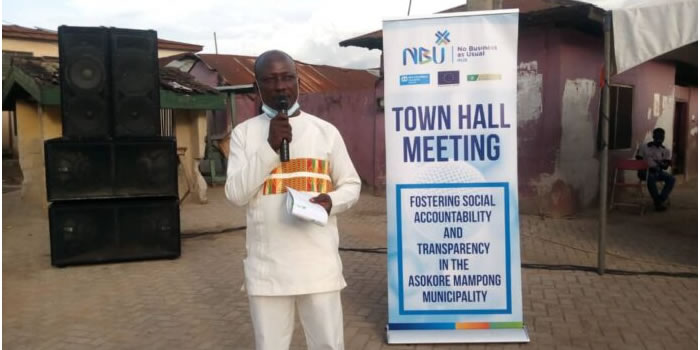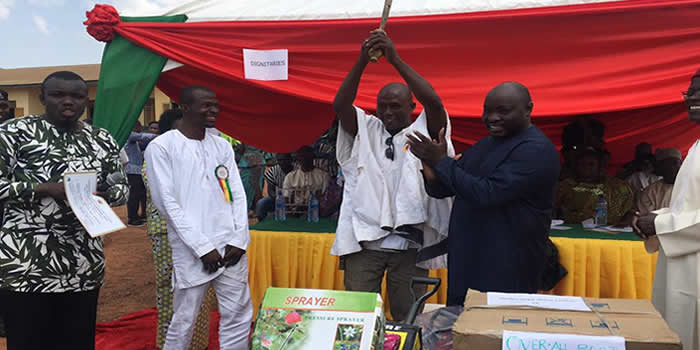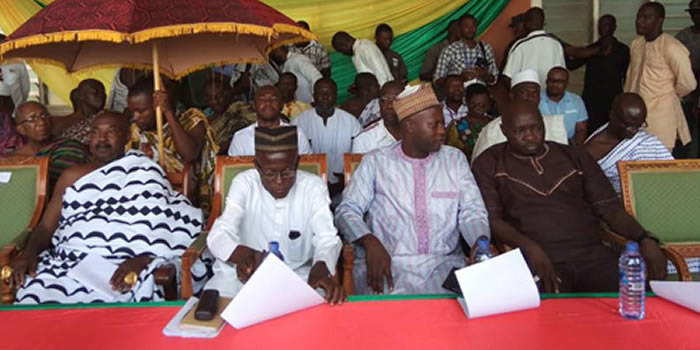

The rationale in formulating this communication strategy was to disseminate information, promote dialogue and generate feedback concerning the present problems and constraints that hinder the development of Asokore-Mampong Municipality, analyse the existing possibly derived potentials that can be exploited to enhance development, and identify areas/sectors for interventions. It also creates awareness on the roles and expectations of every stakeholder in assisting the Municipality to achieve its goals and objectives by monitoring and evaluating future development of the Municipality through identified development themes, strategies, as well as, priorities.
In summary the strategy intends to:
(i) Obtain support for the implementation, monitoring and evaluation of the MMTDP 2014-2017,
(ii) Involve other stakeholders in the Municipal development process,
(iii) Create a sense of urgency about implementing the MMTDP 2014-2017,
(iv) Solicit feedback about the implementation, monitoring and evaluation of the MMTDP 2014-2017.
KEY STAKEHOLDERS
The stakeholders who will assist in conveying the objectives and projects of the MMTDP 2014-2017 to the citizen and also attracting investment in the Municipality includes:
(i) Decentralized Departments
(ii) Politicians
(iii) Traditional Authorities
(iv) NGOs, CBOs, CSOs
(v) Donor Agencies
(vi) Prospective Investors
(vii) Religious Bodies
KEY COMMUNICATION GOALS
The main communication aim of the Municipal for the next four (4) years (2014-2017) would be to:
(i) Create awareness on the roles and expectations of the stakeholders in the implementation of the MMTDP 2010-2013, to improve living standards and development of the Municipal.
(ii) Promote and facilitate dialogue and receive feedback on the performance of the Municipal. This will help provide the Municipal with the necessary information required to improve on service delivery.
(iii) Promote access and manage expectations of the public concerning services rendered by the Municipal.
COMMUNICATION TOOLS
The Municipal Assembly will use several ways to communicate its development agenda to its stakeholders, despite the fact that it does not allocate any specific funds for communication dissemination. The Municipal mostly relies on notice boards located in all government facilities, mailing of letters, mobile van information center, radio advertisements, and information centres.
It also organizes educational campaigns, stakeholder meetings, environmental clean-up days, farmers’ day, community fora, cultural festivals, etc, to convey Municipal and government policies, guidelines and the programmes being implemented.
COMMUNICATION STRATEGIES
General communication strategies have been formulated to cover the Municipal development needs including programmes and projects to be implemented. The strategies include MCEs address to the Municipal Assembly, address to the community and preparation of progress reports by the Municipal Assembly and other Departmental Heads. These reports inform the Municipal Assembly and the public on progress made in implementing the MMTDP.
Information and Communication Technology (ICT)
Information and communication technologies have become an increasingly important part of today’s global economy. The fixed telephone line was the main telecommunications facility until about two decades ago when the mobile phone and the internet appeared on the scene. Currently, mobile phones are fast replacing the fixed telephone. The use of the internet is also increasing rapidly in the country. The Municipal Assembly is keen in training the upcoming youth in ICT and so an ICT centre has been built at Adukrom to facilitate ICT learning.
Ownership of mobile phones;
The table shows population 12 years and older by mobile phone ownership, internet facility usage by sex. In total, there are 217,928 people aged 12 years and older; males constitute 46.8 percent and females 53.2 percent. The total proportion of persons 12 years and older who own mobile phones is 68.0 percent. Out of this, more males (73.4%) own mobile phones than females (63.4%).
Table 1.14 Population 12 years and older by mobile phone ownership, Internet facility usage and Gender
ICT Indicators | Number | Percent | Number | Percent | Number | Percent |
Population 12 years and older | Population having mobile phone | Population Using Internet facility | ||||
Total | 928217, | 928217, | 148,286 | 68.0 | 21,387 | 9.8 |
Male | 101,910 | 101,910 | 74,762 | 73.4 | 14,203 | 13.9 |
Female | 116,018 | 116,018 | 73,524 | 63.4 | 7,184 | 6.2 |
Source: Compiled from Ghana Statistical Service, 2010 Population and Housing Census
For household possession of desktop or laptop computers, more males (10 percent) who have these device as compared to females (7.1 percent).
Surface Accessibility to Services
This section dilates on the accessibility of a number of facilities and services in the Municipality. Even though accessibility could entail economic accessibility and surface accessibility, major emphasis is placed on the surface accessibility in drafting of the following maps.
Date Created : 11/23/2017 5:00:04 AM












 facebook
facebook
 twitter
twitter
 Youtube
Youtube
 +233 593 831 280
+233 593 831 280 0800 430 430
0800 430 430 GPS: GE-231-4383
GPS: GE-231-4383 info@ghanadistricts.com
info@ghanadistricts.com Box GP1044, Accra, Ghana
Box GP1044, Accra, Ghana